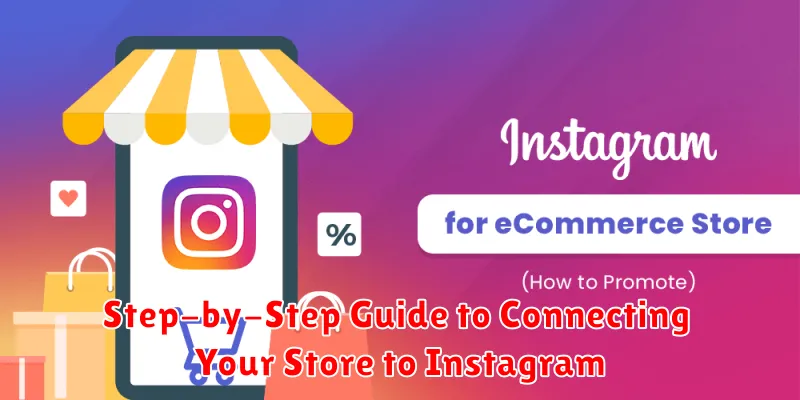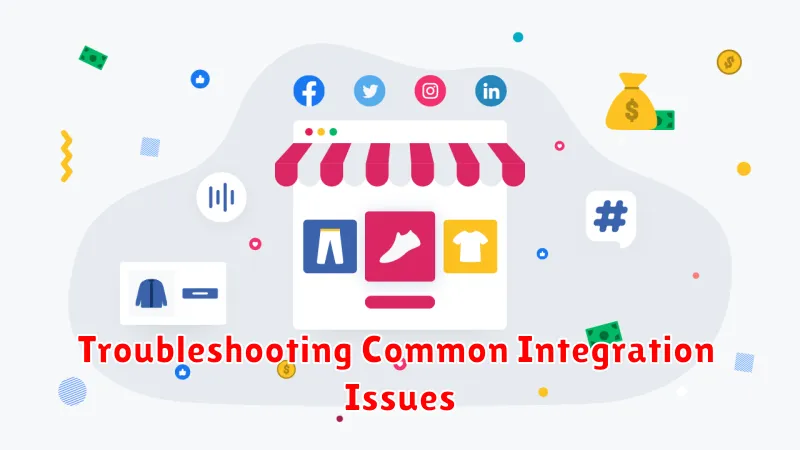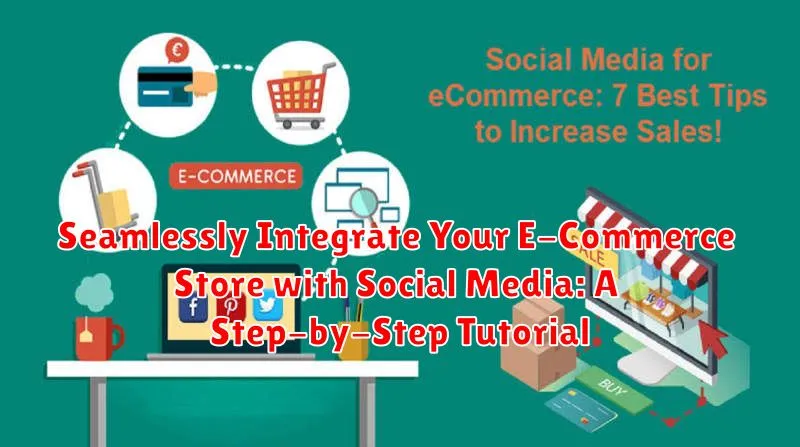In today’s digital landscape, social media integration is no longer optional for e-commerce businesses; it’s a necessity. This step-by-step tutorial provides a comprehensive guide to seamlessly integrating your e-commerce store with social media platforms. Learn how to leverage the power of social commerce to expand your reach, engage your target audience, and ultimately, boost your online sales. Whether you’re a seasoned online retailer or just starting out, understanding the nuances of social media integration is crucial for maximizing your e-commerce success.
This tutorial will equip you with the knowledge and practical steps to connect your e-commerce platform with popular social media channels. Discover how to streamline your product listings, manage inventory, run targeted social media advertising campaigns, and analyze your social commerce performance. We will cover various strategies to optimize your social media presence for e-commerce, including leveraging shoppable posts, creating engaging content, and utilizing social media analytics. By the end of this guide, you will possess the skills to effectively integrate your e-commerce store with social media and drive significant growth for your business.
Understanding the Benefits of Social Media Integration
Integrating your e-commerce store with social media offers a multitude of benefits that can significantly impact your business growth. It’s more than just having a presence; it’s about creating a cohesive and engaging experience for your customers.
Increased Brand Visibility: Social media platforms boast billions of active users. Integrating your store exposes your brand to a wider audience, increasing brand awareness and recognition.
Improved Customer Engagement: Social media fosters two-way communication. You can directly interact with your customers, address their queries, and build stronger relationships. This engagement builds trust and loyalty.
Targeted Advertising: Social media platforms offer robust advertising tools that allow you to target specific demographics and interests, ensuring your ads reach the most relevant potential customers. This targeted approach optimizes ad spend and maximizes ROI.
Drive Traffic and Sales: By showcasing your products and seamlessly linking to your store, you can drive traffic directly from social media to your product pages, facilitating purchases and boosting sales.
Choosing the Right Social Media Platforms for Your Store
Selecting the most effective social media platforms for your e-commerce store is crucial for maximizing your reach and return on investment. Don’t feel obligated to be on every platform; focus on the ones where your target audience spends their time.
Consider these factors when making your decision:
- Demographics: Which platforms align with the age, gender, location, and interests of your ideal customer? For example, a younger demographic might be more prevalent on TikTok and Instagram, while an older demographic might favor Facebook.
- Product Type: Visually appealing products often perform well on image-centric platforms like Instagram and Pinterest. Platforms like Twitter or Facebook might be better suited for products requiring more detailed explanations or discussions.
- Marketing Goals: Are you primarily focused on brand awareness, driving traffic to your website, or generating direct sales? Different platforms excel in different areas. Instagram is excellent for brand building, while platforms like Facebook and Pinterest can drive significant website traffic.
- Resources: Managing multiple social media accounts effectively requires time and effort. Start with one or two platforms and expand as your resources allow.
By carefully evaluating these factors, you can choose the platforms that will best connect you with your target audience and contribute to your business goals.
Step-by-Step Guide to Connecting Your Store to Facebook
Connecting your e-commerce store to Facebook unlocks valuable marketing and sales opportunities. Follow these steps for a seamless integration:
1. Create a Facebook Business Page
If you don’t already have one, create a Facebook Business Page. This will serve as the central hub for your store’s presence on Facebook.
2. Install the Facebook Pixel
The Facebook Pixel is a small piece of code that tracks visitor activity on your website. Install this pixel on your e-commerce platform. This data is crucial for running effective ad campaigns and understanding customer behavior.
3. Connect Your Catalog
Upload your product catalog to Facebook. This allows you to create dynamic ads and tag products directly in your posts, making shopping easier for customers.
4. Set Up Facebook Shop
Create a Facebook Shop section on your Business Page. This provides a dedicated space for customers to browse and purchase your products directly within Facebook.
5. Begin Promoting Your Products
Start leveraging Facebook’s advertising platform to reach a wider audience. Utilize the data gathered by the Facebook Pixel to target specific demographics and interests.
Step-by-Step Guide to Connecting Your Store to Instagram

Connecting your e-commerce store to Instagram allows for seamless product discovery and shopping directly within the app. This integration is crucial for reaching a wider audience and driving sales.
Step 1: Ensure you have an Instagram Business Account. If you have a personal account, convert it to a business profile. This grants access to shopping features and analytics.
Step 2: Connect your Instagram account to a Facebook Page. This is a mandatory requirement for setting up Instagram Shopping. Make sure you are an admin of the Facebook Page.
Step 3: Upload your product catalog to Facebook Catalog Manager. This catalog will sync with your Instagram shop, allowing you to tag products in your posts and stories.
Step 4: Submit your account for review. Instagram will review your account to ensure it complies with their commerce policies. This process can take a few days.
Step 5: Turn on Shopping features in your Instagram settings. Once approved, navigate to your Instagram settings and enable the shopping feature.
Step 6: Start tagging products in your posts and stories. After activating the shopping feature, you can begin tagging products from your catalog in your Instagram content.
Integrating with Other Popular Social Media Platforms
Beyond Facebook and Instagram, several other social media platforms can significantly benefit your e-commerce strategy. Pinterest, a visually-driven platform, is excellent for showcasing products and driving traffic through shoppable pins. Consider creating boards dedicated to specific product categories or seasonal collections.
Twitter, while not primarily a shopping platform, can be used effectively for customer service, product announcements, and engaging with your audience. Quick replies and proactive engagement are key on this fast-paced platform.
TikTok‘s short-form video format provides an engaging way to demonstrate products, share behind-the-scenes content, and reach a younger demographic. Consider using trending sounds and hashtags to increase visibility.
When integrating with these platforms, ensure your branding remains consistent. Use similar profile pictures, cover photos, and brand voice across all channels. Tailor your content to each platform’s unique style and audience.
Leveraging Social Media for Customer Service and Engagement
Social media offers a powerful platform for customer service and engagement. Responsiveness is key. Address customer inquiries and complaints promptly and professionally.
Use social media to build relationships. Share valuable content related to your products or industry. Run contests and polls to encourage interaction.
Monitor social media channels for mentions of your brand. This allows you to address both positive and negative feedback, showcasing your commitment to customer satisfaction.
Personalize your interactions. Address customers by name and tailor responses to their specific needs. This fosters a sense of community and loyalty.
Finally, use social media to gather feedback. Ask questions and encourage customers to share their opinions. This valuable information can help you improve your products and services.
Troubleshooting Common Integration Issues

Integrating your e-commerce store with social media can sometimes encounter hiccups. This section addresses common issues and offers solutions.
Product Synchronization Problems
If your product catalog isn’t syncing correctly, ensure the product feed is formatted according to the social media platform’s requirements. Check for data discrepancies, such as missing fields or incorrect formatting. Verify the connection between your store and the platform is stable.
Broken Shopping Links
If customers encounter broken links, double-check the URLs in your product feed and on your website. Ensure your website is accessible and the product pages are live. Test the links yourself to confirm they direct to the correct product pages.
Performance Tracking Discrepancies
Differences in sales data between your store and social media analytics can occur. Verify the attribution settings on both platforms to ensure they align. Check for time zone differences that may affect reporting accuracy.
Best Practices for Managing Your Social Media Presence
Maintaining a consistent and effective social media presence requires careful planning and execution. Consistency is key. Establish a regular posting schedule to keep your audience engaged and informed.
Brand voice should be uniform across all platforms. Whether you’re using a playful, informative, or professional tone, ensure it aligns with your brand identity.
Content curation is essential. Share a mix of original content, relevant industry news, and user-generated content to keep your feed fresh and dynamic. Don’t forget the 80/20 rule: 80% of your content should be valuable and informative, while 20% can be promotional.
Engage with your audience actively. Respond to comments and messages promptly and participate in relevant conversations. Social listening is crucial. Monitor brand mentions and industry trends to understand customer sentiment and adapt your strategy accordingly.
Finally, analyze your performance. Track key metrics like engagement rate, reach, and website traffic to measure the effectiveness of your social media efforts and refine your approach over time.

